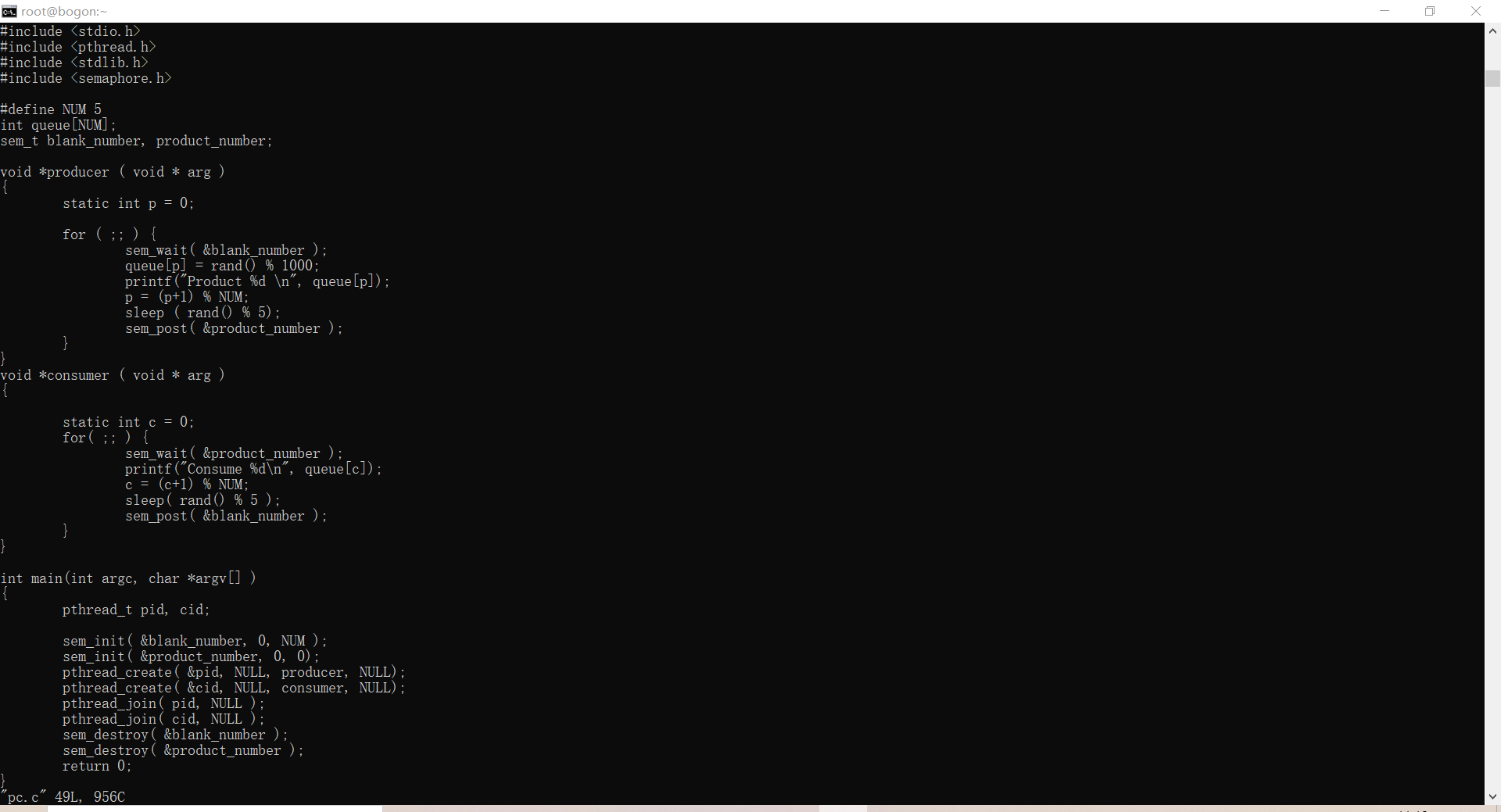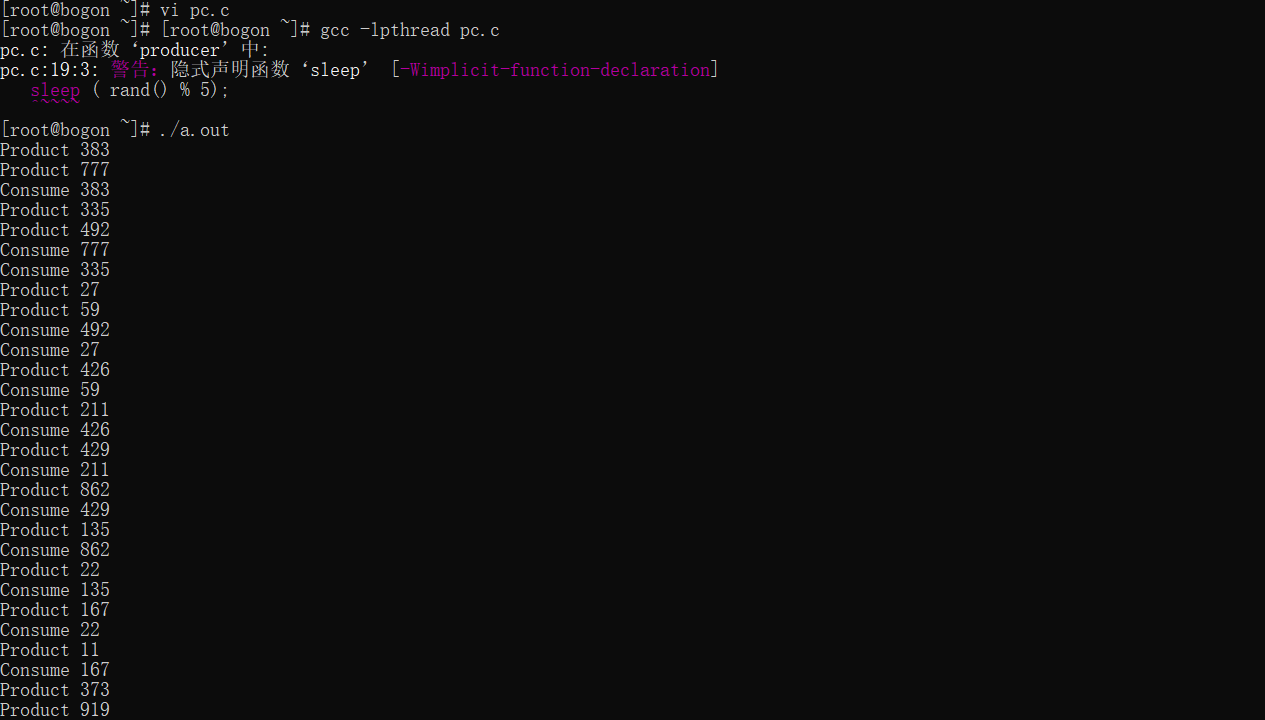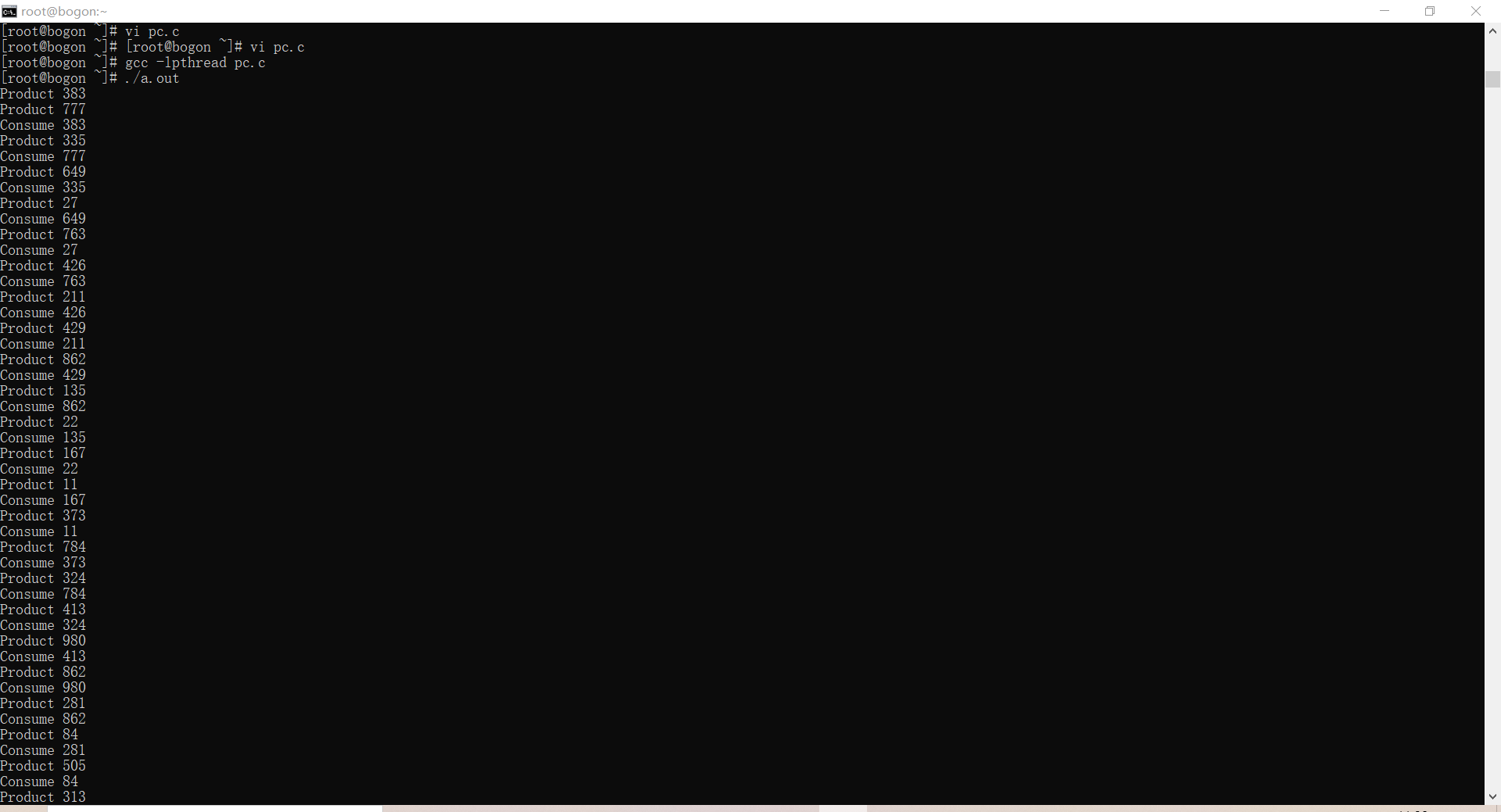1.编译运行附件中的代码,提交运行结果截图,并说明程序功能 2.修改代码,把同步资源个数减少为3个,把使用资源的线程增加到 (你的学号%3 + 4)个,编译代码,提交修改后的代码和运行结果截图

即一个消费者线程,一个生产者线程。最大的空间为5(即空格+产品=5)

生产者生成资源,消费者取走资源。
20191226%3+4=6 所以消费者线程增加到个数为6,且需要互斥地去访问产品(最多为三个)【1一个生产者线程,6个消费者线程】
改进后的代码为
#include <stdio.h>
#include <pthread.h>
#include <stdlib.h>
#include <semaphore.h>
#include <unistd.h>
#define NUM 3
int queue[NUM];
sem_t blank_number, product_number,mutex;
int c = 0;
void *producer ( void * arg )//生产者
{
static int p = 0;
for ( ;; ) {
sem_wait( &blank_number );//空格子锁
queue[p] = rand() % 1000;
printf("Product %d \n", queue[p]);
p = (p+1) % NUM;
sleep ( rand() % 5);
sem_post( &product_number );
}
}
void *consumer ( void * arg )//消费者
{
for( ;; ) {
sem_wait(&mutex);
sem_wait( &product_number );
printf("Consume %d\n", queue[c]);
c = (c+1) % NUM;
sleep( rand() % 5 );
sem_post( &blank_number );
sem_post( &mutex);
}
}
int main(int argc, char *argv[] )
{
pthread_t pid, cid,cid1,cid2,cid3,cid4;
sem_init( &blank_number, 0, NUM );//初始化空格信号量
sem_init( &product_number, 0, 0);//初始化产品信号量
sem_init( &mutex, 1, 1);//初始化(消费者的)互斥信号量为1
pthread_create( &pid, NULL, producer, NULL);//创建生产者线程
pthread_create( &cid, NULL, consumer, NULL);//创建消费者线程
pthread_create( &cid1, NULL, consumer, NULL);//创建消费者线程
pthread_create( &cid2, NULL, consumer, NULL);//创建消费者线程
pthread_create( &cid3, NULL, consumer, NULL);//创建消费者线程
pthread_create( &cid4, NULL, consumer, NULL);//创建消费者线程
pthread_join( pid, NULL );//等待生产者线程执行完
pthread_join( cid, NULL );//等待消费者线程执行完
pthread_join( cid1, NULL );//等待消费者线程执行完
pthread_join( cid2, NULL );//等待消费者线程执行完
pthread_join( cid3, NULL );//等待消费者线程执行完
pthread_join( cid4, NULL );//等待消费者线程执行完
sem_destroy( &blank_number );
sem_destroy( &product_number );
return 0;
}




